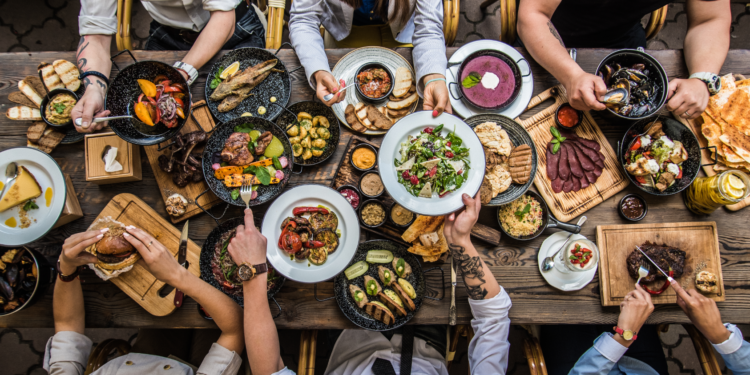Next week is the 16th annual Dining Out for Life San Diego and you’re invited to make plans now with your friends, family, coworkers, and neighbors.
Locally, around 70 restaurants have signed up to donate at least 25% of their proceeds to support HIV/AIDS services and prevention programs for the San Diego LGBT Community Center and the North County LGBTQ Resource Center.
Nationally, nearly 60 cities will participate in inviting supporters to share in a meaningful meal that will fill you with both deliciousness and a sense that we can all contribute to something bigger than ourselves. Since 2006, this annual event has raised $52 million with thousands of restaurants and hundreds of volunteer making it happen, according to Business Insider.
This year is particularly impactful. As we seek to reclaim a new normal and return to some of our traditions, restaurants are still struggling with supply chain and staffing issues. For that reason, I am especially thankful to each of the business partners who stepped up to support our community this year.
I personally have been HIV+ for over ten years. I use this day as an opportunity to normalize discussing HIV, STIs, sexual health, and regular testing. Often, I see HIV used to fear monger for abstinence or safer sex or a specter of death. Too often, those of living with HIV are left out of the conversation.
In the face of national attacks on our community’s most vulnerable, we must seek and take advantage of opportunities to share Queer spaces and make Queer spaces in non-traditional places and recenter the work we must do collectively.
During the pandemic, much of our community’s knowledge and resources were used in supporting combating COVID-19. So, let’s recenter ourselves on the very real issue that HIV is by looking at the data we have available.
We know from San Diego County data findings that most of the new HIV diagnosis over the last ten years were people of color, with the proportion of Hispanic/Latino cases increasing the most. And over a third of all new HIV cases were diagnosed in people ages 20 to 29, with over 50% of new infections occurring between 20 and 39 years of age.
So, we know people are contracting HIV in their 20s and 30s and that those most at risk are Latinx and Black men who have sex with men and the trans community.
The data also shows high rates of AIDS diagnosis for people newly diagnosed with HIV in the southern region (23.6%) and northern region (28.3%). The County’s data tracks folks who were diagnosed with AIDS within 12 months of their initial HIV diagnosis. This tells us that people are not getting regularly tested for HIV and as a result when they are tested and diagnosed, the virus has impacted their immune system and lowered their CD4 white blood cell counts to below 200 cells/mm3.
Educate yourself and get tested.









